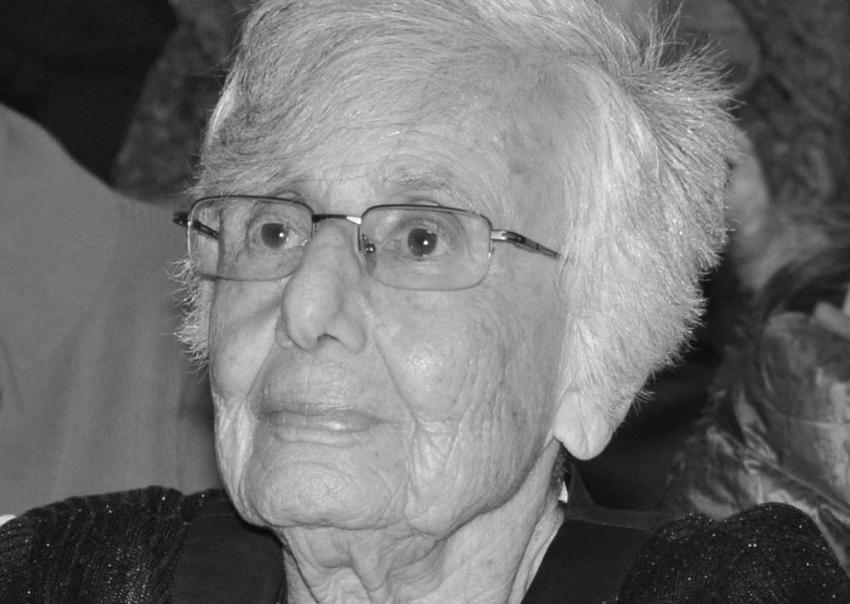I would like to talk about names – not on behalf of the survivors, as they can speak for themselves – but on behalf of the dead, even though I was not authorized by them to do so. Firstly, about the name of the day on the eve of which we are gathered here: Holocaust Martyrs’ and Heroes’ Remembrance Day, a title chosen in the early years of the State of Israel. This name implies that the Holocaust of six million people, and the heroism of those who took up arms, the rebels and partisans, are two separate entities, which they are not. The heroism is at the heart of the Holocaust, an inseparable part of it. The heroism of the mothers who stayed with their children instead of saving themselves, of the sons and daughters who refused to abandon their parents, of the doctors and nurses who took care of the sick despite the terrible risk to their own lives, the heroism of every single person who tried to alleviate the suffering of another, of every person who struggled to stay alive till the bitter end. I hope that the day will come when we Israelis will be sufficiently mature to give this remembrance day its rightful name: Holocaust Day.
Furthermore, primarily in the name of the dead but also in the name of those survivors still living, I protest the use of Holocaust jargon in the context of political rivalry, here today, between Jews: Judenrein, Judenrat, Nazis and Judeo-Nazis, Auschwitz, the images of swastikas and SS uniforms, used by Jews for political purposes: this is the real desecration of the Holocaust. Neither the performing of Wagner nor the gratuitous use of the term “Holocaust” is as painful, embarrassing and provocative as the use of Holocaust terminology in the political life of a Jewish state. Holocaust denial and distortion in Europe and America are upsetting and worrying, and must be fought, but the use of vocabulary from the most horrific period in Jewish history by Jews against other Jews, that is intolerable and unforgivable. After all, the Hebrew dictionary is not short of degrading words and curses unconnected to the Holocaust.
When this Holocaust Remembrance Authority was given the name Yad Vashem, there were no computers, and no one could have imagined the registration of millions of names of Holocaust victims. Indeed, to my mind, this is the greatest commemorative project of all – to preserve the name and the memory of each individual who perished in the Holocaust. The figure of 6,000,000 is like a thick fog in which nothing is perceptible. The 3,200,000 names of Holocaust victims recorded on computer at Yad Vashem, and the hundreds of thousands which are still to be added – these are the only memorial to those who have no known grave, the only monument to those turned to dust and ashes. Soon, no one will be left to retain the memory of the individuals, the parents, the siblings and the friends, no one who still sees their faces, hears their voices, feels their presence. The campaign to commemorate their names ensures the preservation of the memory of each individual with his or her name, date and place of birth, time and place of death (sometimes only approximate), when the survivors will have passed on.
I will just add this on behalf of the survivors: in these difficult times, when parents see their children killed, when we see the smiling young faces of the victims of terror in the press and on television, our thoughts keep returning to those terrible days sixty years ago, and we draw strength from them. After World War II we came to Eretz Israel – many of us as fighters in the War of Independence – not because we thought we could live here safely, but in order to live among Jews in a Jewish state, and never again to be a minority, barely tolerated. This remains the paramount consideration, even today: to live in a Jewish state. Perhaps we will never live in peace and security in our own land, but even so, we must continue as far as possible with our everyday lives, our work, our routine, as these also provide us with much-needed support. Today the pictures, children’s drawings, songs and musical compositions created in the Holocaust period are the subject of renewed interest. Beyond their artistic value, however, is their inherent message for our own times: work, create, love, raise children, take joy in the small things, hope, don’t give up, see beauty in the commonplace, even in the harsh reality we are experiencing. Perhaps that is the only lesson to be learned from us survivors: that every day is a gift, and that the greatest prize is not winning the lottery, but life itself.







